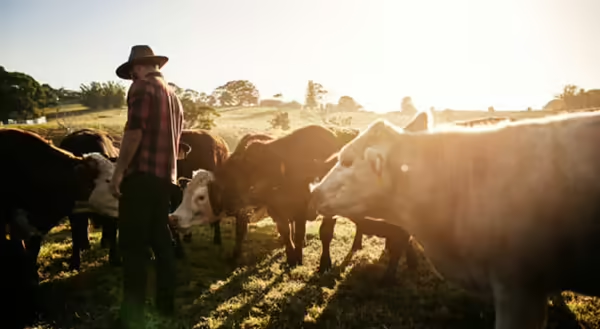
Beep! Ding! Buzz! The noises and alerts that come from a cell phone can absolutely dominate your day. Answering calls, emails, texts, social media alerts, and on and on… the happenings around you can come and go while you are still staring at your phone.
While taking pasture samples a few weeks ago, I challenged myself to observe. I turned my phone to silent and left it in my pocket. I wanted to focus on the pasture conditions and the behavior of the cattle.
Here are a few really simple observations I made when sampling pastures:
- Cattle like shade
- Cattle don't like fescue in the spring, they prefer clovers, Bromegrass and Orchardgrass
- Cattle don't eat the grass around manure, spiny weeds
- Cattle graze harder closer to the water
- Flies cause cows to huddle and not graze
These observations are rudimentary. However, I think they warrant discussion.
First, Cattle will seek shade. In every paddock, the majority of the cows were grazing in the shade. That day the weather was fairly typical of an Illinois June. It was warm, a bit humid, but there was a nice breeze. It was obvious that cattle preferred the shade.
Many times when developing a rotational grazing plan, producers ask "Do cattle need shade?" I think answering this question becomes easy when observing cattle behavior. Allowing cattle access to shade makes sense to me. It is their natural behavior to seek shade. They may not need it or use it on every day of the year, but I would recommend having access to shade in a planned grazing system.
Next, it was easy to see that the cattle were not mowing the paddock from front to back at a certain height like a mower. They were selectively grazing. They preferred more tender, larger leaf plants over more stemmy, mature growth. They also tended to graze legumes, Bromegrass, and then Orchardgrass before endophyte-infected Fescue.
Cattle are largely path of least resistance eaters. They like the stuff that is easy to eat. The tender, immature plants. Generally, those plants are often higher in nutritive value than a mature plant too. Unless we stock cattle at a very high density, they will typically eat the good stuff and ignore the rest.
I think this observation can help answer a lot of questions. If you're seeding a new pasture, plant a mixture of species, but plant species that cattle like to consume. Also, if you have pastures that are predominately Fescue, maybe fall grazing should be the priority for those areas. Few things are as good as stockpiled Fescue in the early winter, but cattle sure don't care for it in the spring.
Now, I also observed several spots that were ungrazed adjacent to areas that were heavily grazed. Many times the areas that were left ungrazed were inhabited by a manure patty or a spiny weed. Cattle do not like to graze next to manure and they do not like to graze in areas of irritation.
Distance from water also influences grazing pressure. If cattle have to trail a long way to water, they will not graze that area as frequent. This is especially true in the summer. In the summer, cattle are hot and tend to drink more water. They will undoubtedly graze the area close to the water heavier.
When planning a grazing system water is likely the biggest influencer. Locating the waterer within 700-800 feet of the farthest area in the paddock will help keep grazing uniform. Having the ability to take water to different areas of the pasture can help increase pasture utilization and can greatly benefit a strip grazing or rotational grazing set-up.
Another observation was that fly pressure makes cows huddle up and stop grazing. Cows will huddle and group or stand in water or mud to limit surface area exposure to flies. This causes a decrease in time spent grazing or resting. Thus, less feed intake and more energy expenditure results in poorer performance. A good fly control program will help your cows spend more time grazing.
A large percentage of questions I receive from producers hinge on their observations. Accurate and thorough observation can quickly identify problems that need solved. I believe that the power of observation can not only identify problems, but also serve to answer many of the questions. Today with so many distractions, mainly a cell phone; it is hard to take the time to observe. I encourage you to take that time to observe. Observe your cattle. Observe their environment. Not only is it relaxing to observe cows grazing in a pasture, but observing can also be one of the most valuable components to effective herd management.